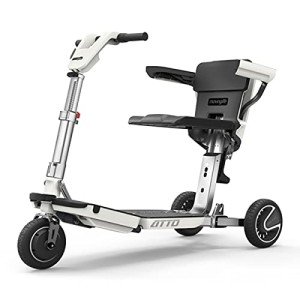The Reason Why Everyone Is Talking About Mobility Aids Right Now
Understanding Mobility Aids: Enhancing Independence and Quality of Life
As society continues to age and people progressively seek ways to preserve self-reliance, the need for mobility aids has actually never ever been more pertinent. Anika , which encompass a variety of devices developed to assist individuals with strolling or moving, play a crucial role in promoting mobility, improving safety, and enhancing total quality of life. This blog post will explore the numerous types of mobility aids, their benefits, considerations for choice, and address some frequently asked questions.
Kinds Of Mobility Aids
Various mobility aids are offered, each created to attend to specific requirements. The following table summarizes a few of the most common types of mobility aids and their functions.
Kind Of Mobility Aid
Description
Best Suited For
Key Features
Walking sticks
A portable stick offering support and balance.
People who require very little help.
Light-weight, portable, adjustable height.
Walkers
Four-legged frames offering stability.
Those needing substantial assistance while walking.
Foldable, some with wheels, added safety features.
Rollators
Wheeled walkers with a seat for resting.
Individuals needing mobility with the option to rest.
Brakes, baskets for individual items, adjustable height.
Wheelchairs
Chairs with wheels for individuals with limited mobility.
Those unable to stroll or requiring comprehensive assistance.
Manual or powered alternatives, customizable seating.
Scooters
Motorized devices for bigger distances.
People with limited stamina but needing independence.
Different sizes and styles, typically easily transportable.
Crutches
Assistance devices placed under the arms or forearms.
Individuals recuperating from lower limb injuries.
Adjustable, lightweight, requires upper body strength.
Stairlifts
Mechanical devices for moving in between floors.
Users facing difficulties in multi-level homes.
Personalized for different staircases, automated.
Benefits of Mobility Aids
Mobility aids supply a variety of benefits that can substantially improve the lives of people facing mobility obstacles. Some noteworthy advantages consist of:
Increased Independence: Mobility aids empower people to move easily without counting on others for assistance, thereby improving their self-confidence and self-confidence.
Enhanced Safety: Using mobility aids can decrease the danger of falls and injuries, particularly for older adults or those with balance concerns.
Enhanced Quality of Life: By helping with mobility, individuals can take part in social activities, go to events, and take pleasure in life more totally, adding to better emotional and mental health.
Rehabilitation Support: After surgical treatment or injury, mobility aids offer necessary assistance and stability, aiding in recovery and rehab procedures.
Ease of access: Many mobility aids are designed to be utilized both inside and outdoors, making sure that people can navigate different environments with ease.
Factors to Consider When Choosing Mobility Aids
Picking the suitable mobility help requires mindful factor to consider of a number of factors, consisting of:
Factor
Considerations
User's Needs
Assess the level of mobility required; consider whether the user requires short-lived or long-lasting assistance.
Physical Limitations
Evaluate the user's strength, balance, and coordination to figure out the best type of help.
Setting
Consider the primary environments where the aid will be utilized, such as home, outdoors, or specific terrains.
Weight and Portability
Make sure that the chosen device is workable concerning transportability and storage, particularly for outdoor use.
Spending plan
Mobility aids been available in a variety of prices; think about insurance protection and available financing choices.
Adjustability
Select aids that can be changed for height and convenience to accommodate growth or changing requirements.
Regularly Asked Questions About Mobility Aids
1. How do I know if I need a mobility help?
Many factors can indicate the requirement for a mobility aid, such as difficulty walking or stabilizing, fatigue while standing, or a recent surgical treatment affecting mobility. Consulting with a healthcare professional can supply assistance tailored to individual requirements.
2. What kinds of mobility aids are covered by insurance?
Protection varies in between insurers, however many provide options for resilient medical devices, which usually includes wheelchairs, walkers, and some kinds of walking canes. Contact your insurance company for particular coverage info.
3. Can mobility aids be utilized outdoors?
Yes, many modern mobility aids are designed for outdoor usage. Rollators, scooters, and some walkers are geared up with features for stability and ease of usage on different terrain.
4. How do I preserve my mobility aid?
Regular upkeep involves checking for any wear and tear, ensuring that parts such as wheels, brakes, and frames are working properly, and cleaning the devices as needed. Following the producer's standards is crucial for safety.
5. Exists a danger of becoming depending on mobility aids?
While some users may end up being reliant on mobility aids, they are created to promote self-reliance and mobility. Gradually utilizing a mobility help can enhance self-confidence and assistance maintain physical strength and coordination.
Mobility aids are vital tools that empower people to overcome physical challenges, promoting independence and boosting quality of life. By understanding the numerous types of mobility aids offered, their advantages, and crucial factors for factor to consider, households and caregivers can make informed decisions that best meet the needs of their liked ones. With the ideal support, those with mobility challenges can lead satisfying and active lives, totally free to explore the world around them.
